Contents
One of the most numerous breeds in Our Country – the Bashkir horse – was formed in the region of the Southern Urals. It was formed as a universal horse of the agricultural people. The Bashkirs, if they wandered, were not far away. But the proximity of nomadic tribes left its mark on the traditions of keeping horses.
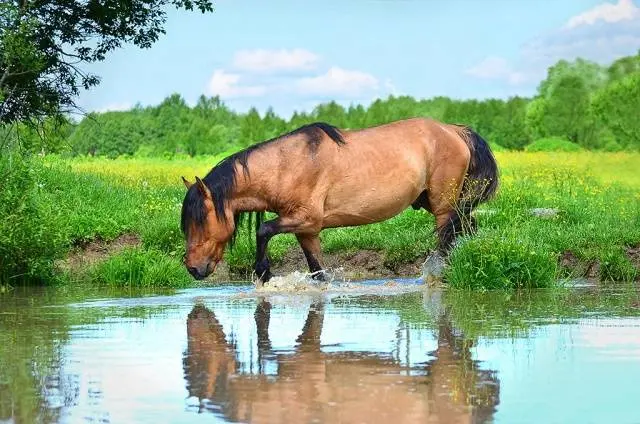
As horses of nomadic peoples, Bashkir horses were kept in steppe herds, getting their own food in winter. Since many Bashkirs kept herds of 400-500 heads, it is not surprising that hay was not harvested for them. People fed only those horses that were left in the house to work in the winter.
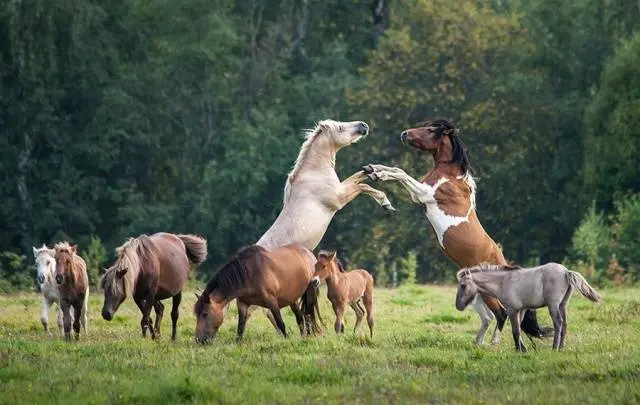
The Bashkirs were used as a riding horse for grazing and driving cattle and as a draft force in a plow. In winter, along with the Vyatkas, Bashkir troikas galloped along the roads of the Empire.
This breed was widespread in the XVII-XVIII centuries. She was bred not only on the territory of modern Bashkiria, but also in the Kazan, Perm, Samara provinces. The total number of horses of the Bashkir breed totaled 600 thousand heads.
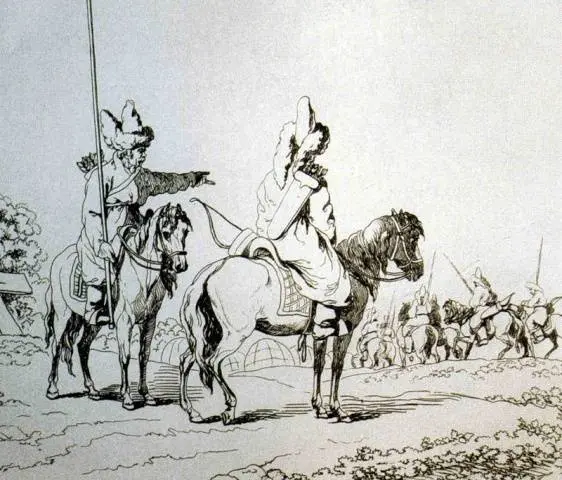
Such a large livestock made it possible to form entire regiments of “wild Bashkirs” where the Bashkirs served along with their national breed. These regiments played a significant role in both Patriotic Wars: 1812 and 1941-1945.
The Bashkir breed has never experienced a crisis in its development. First of all, because there has never been a reverent attitude towards these horses and they have never been embarrassed to use them for food. Today breeding for meat is the main purpose of the Bashkirs. And they are not in danger of extinction. Although the authorities of the Bashkir Republic tried once to bring the breed to extinction.
It was difficult for the Bashkir people to imagine their life without a horse. Koni Tolpar and Akbuzat play a big role in the Bashkir epic.

In light of this, in 2011, the legislators of Bashkortostan came up with a “brilliant” idea to ban the export of purebred Bashkir horses from the region. In fact, this would be the killing of the breed, since today Bashkir horses are bought for breeding for meat and milk in the farms of other regions. The largest company “Snipe” has a herd of horses of the Bashkir breed in the Tver region, numbering more than 1000 heads.
Description
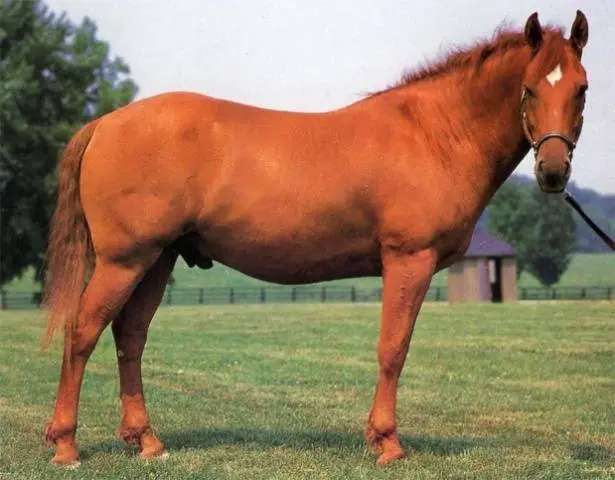
In the Bashkir herds bred for meat, no one particularly monitors the purity of the breed and does not select the right producers. The mating of herd horses takes place according to the principle “whoever is stronger leads the school”, which means that all the mares in the school belong to the stallion. Therefore, the description and photos of the Bashkir breed of horses give a poor idea of uXNUMXbuXNUMXbreal animals. The photo above is the type of Bashkir horse that people usually imagine. But there are also horses with a very “heavy” front, similar to the Przewalski’s horse, but with an even lower neck extension. There are also horses that are difficult to distinguish from a horse of a riding breed.
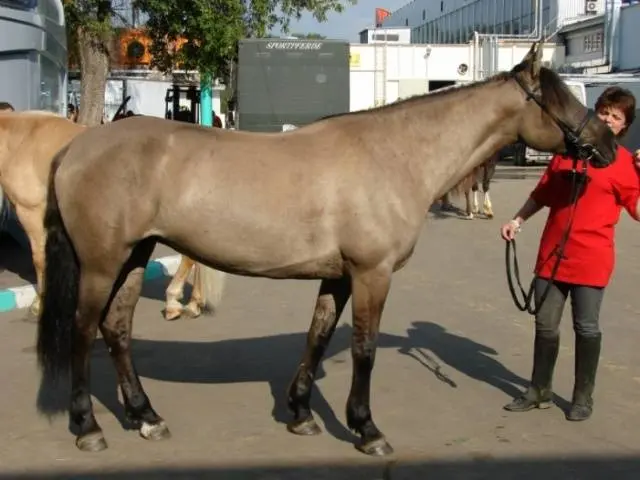
Usually these are horses of a rough constitution, with a large head. They have a wide forehead with wide ganaches. The neck is short, thick, raw. Low output. The body is massive, it can be both long and short. The chest is wide. This compensates for the short stature of the horses, and even a tall person does not look funny, sitting on the Bashkirian. The back is wide, strong. The croup is moderately sagging, rounded. Legs are short and strong. The tail and mane are very bushy. In winter, Bashkir horses are overgrown with very long hair with a thick undercoat that protects them from the cold.
Height at the withers is from 138 to 145 cm. But due to the massive body, the Bashkir horse does not look like a pony.
Fat
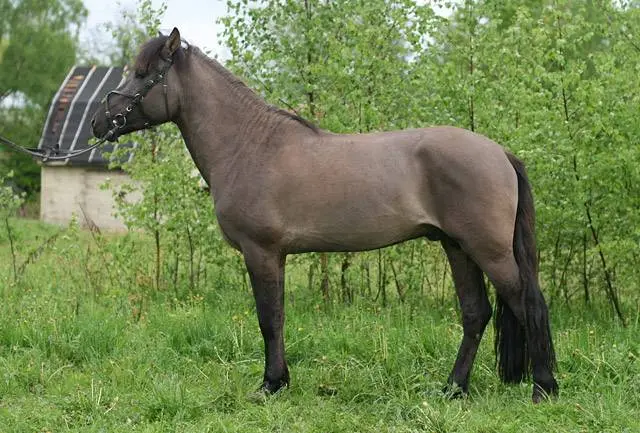
Bashkir horses are surprisingly diverse in color. They have all the options for the main colors: red, bay, black, gray. All variants of Savras and all variants of suits with the Cremello gene. There is even a chubara suit available.
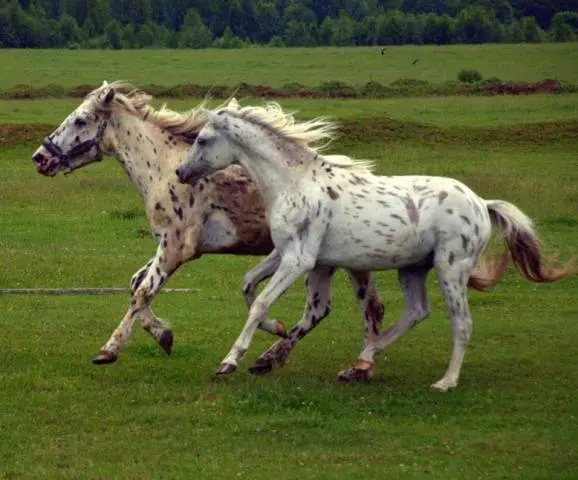
Of the suits with the Cremello gene, the dun and nightingal color are very much appreciated.
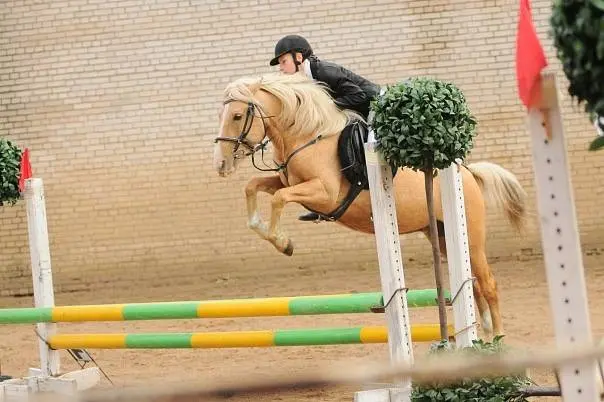
Especially beautiful is the nightingale horse with a golden sheen of wool. Such a shine clearly indicates the admixture of one of the five “brilliant” breeds in the Bashkir horses:
- Karabakh;
- Akhal-Teke;
- Budennovskaya;
- The Don;
- Kustanai.
It is difficult to understand when such mixing occurred. This could happen during wars, when entire regiments were formed from the Bashkir horses and no one followed the purity of the breed.
Pros of the breed
These horses are distinguished by excellent health, they are able to eat very roughage, often independently getting their own food from under the snow. They have good, strong, well-shaped hooves that rarely require shoeing. They are very economical in maintenance and perfectly hold the body, “swelling with air”.
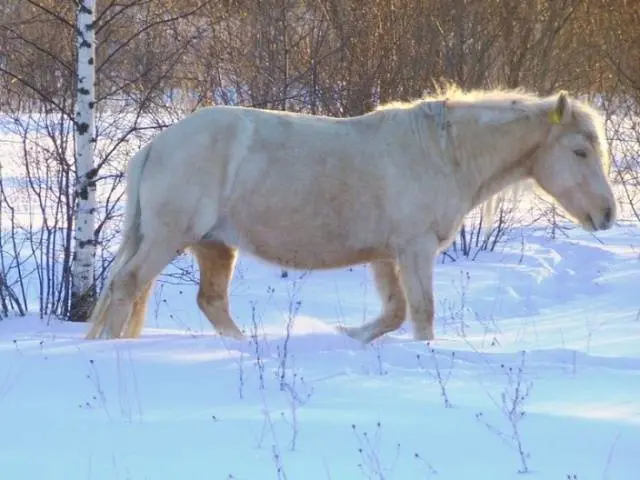
And this food may be neighboring ornamental plantings.
Since the breed is aboriginal, the self-preservation instinct of these horses has been fully preserved. The Bashkirian always thinks how this or that action will end for him. He cannot be driven into the swamp. He won’t jump romantically until he drops dead. At best, he just balks. At worst, he will drop the rider off and offer to do without a horse.
With them there are no problems when grazing on a leash. Horses often cut their legs with rope after getting tangled in a harness. Bashkirian is not. If everything is really bad, he will stand and wait for a person.
Bashkirs have good movements compared to other native breeds. Relatively wide free stride and canter. The lynx is very soft, comfortable for traveling long distances. And a technical jump, which is confirmed by the photo of this horse of the Bashkir breed.
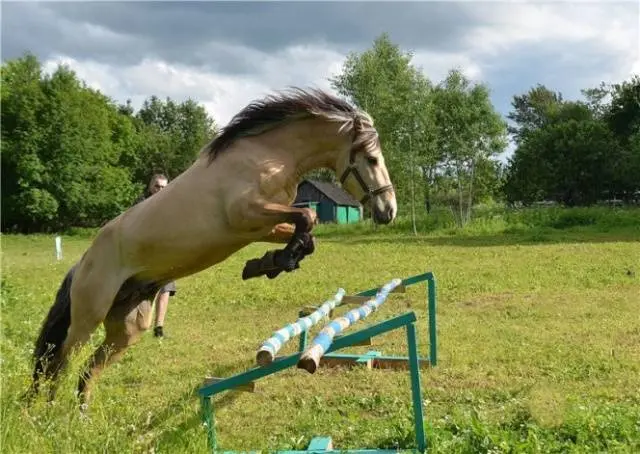
Cons of the breed
Unfortunately, these horses have more disadvantages. These horses are only for a confident rider. No matter how old the rider is, he must be confident. The Bashkirs live according to the law of the jungle “he who is stronger is right.” Sensing an insecure rider, the Bashkirian will do everything to poison a person’s life. Even if he does not land a newcomer, knowing that he will be punished for this, the Bashkirian will invent 1000 and 1 way to let a person understand that in their tandem the leader is a horse.
Bashkirs are well aware of their rights, but they prefer to forget their duties. Knowing perfectly well when punishment does not threaten them, they immediately begin to insist on their rights. Moreover, the Bashkirian will not succumb to any provocations if he knows that he will be punished.
They do not have special respect for a person, constantly testing the strength of both the rider and the stall (suddenly they manage to break it), and the rope in the grazing (if it breaks, you can go for a walk).
A herd native horse does not need to take care of the cleanliness of the place where it lives. After all, the whole steppe is at her disposal. This was reflected in the Bashkirs. They do not know how to stand in the cramped stalls of the stable, mixing all the bedding under their feet. In nature, wild horses protect themselves from bloodsuckers by wallowing in liquid mud. Therefore, when entering the levada after rain, the Bashkirian first of all finds a suitable puddle to wallow in it.
Bashkirs are beautiful only in professional artistic photos. In reality, they give the impression of unsightly big-headed horses and do not cause adults to want to sit on them. People who have come to rent are much more willing to ride Arabian horses. Although both breeds are of similar size, the Bashkir ones are much more powerful.
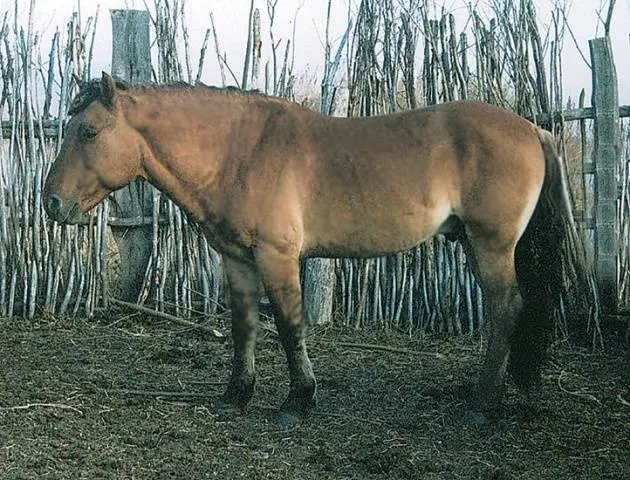
Application
Today, the main area of use of the Bashkir breed of horses is the production of meat and koumiss. Often, Bashkir horses are bought directly from the herd for personal farmsteads and equestrian clubs. Horses quickly get used to and become tame. Previously, the Bashkir even taught children how to ride, but now this breed is considered not at all childish. This is partly true.
When using the Bashkir horse as a training or rental horse, riders are constantly changing. At the same time, this breed is distinguished by devotion to the owner and a fairly harmful character. If the Bashkirian gets along with the owner, he will take him out of any situation. With a constant change of riders, the Bashkirian begins to seek his own advantage: whom to intimidate so that he does not come up again; whom to land; under whom to refuse to move at all.
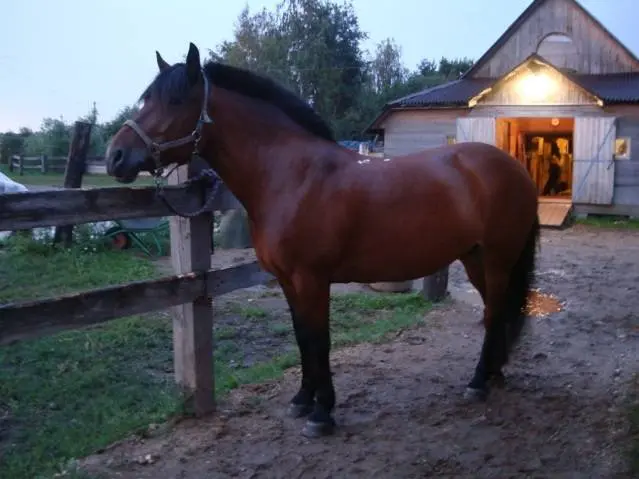
The Bashkirs used in clubs have one interesting feature: the horse does not forgive the slightest mistake of the rider. At the same time, if a horse makes a mistake, almost sending the rider to the next world, he just gets up, naively blinks his eyes, and on his muzzle it is written in large letters: “Just think, you made a mistake. Everyone is wrong.”
But with proper preparation and if no mistakes were made, the Bashkir horse is able to pass routes up to 120 cm high without falling down.
They can also work in dressage, but according to the owners themselves, due to the specific physique and character traits, it takes many times more effort and time to train and train the Bashkir horse in the required elements than when preparing a sports breed.
But in Crimea there is a positive experience of using Bashkir horses in races. So far, the level of these competitions is low and the Bashkirs have come up well for him, which is confirmed by the photo of the Bashkir horses from the run.
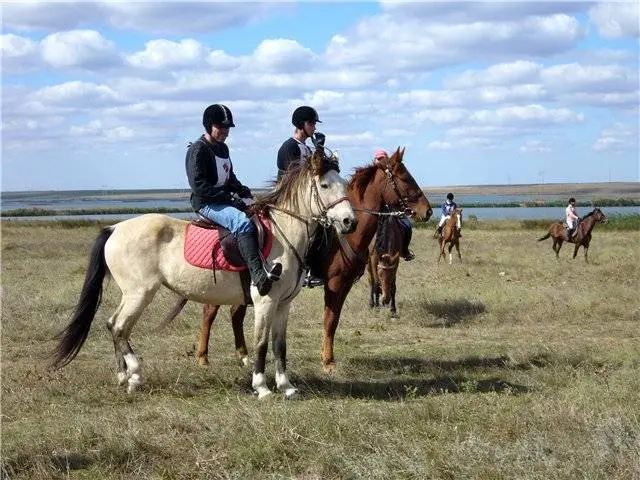
Reviews
Conclusion
The Bashkir horse is perfectly adapted to survival in the wild and can be used as a universal horse in private backyards. It is suitable for both riding and harness work, but requires a steady hand and the ability to handle horses.









